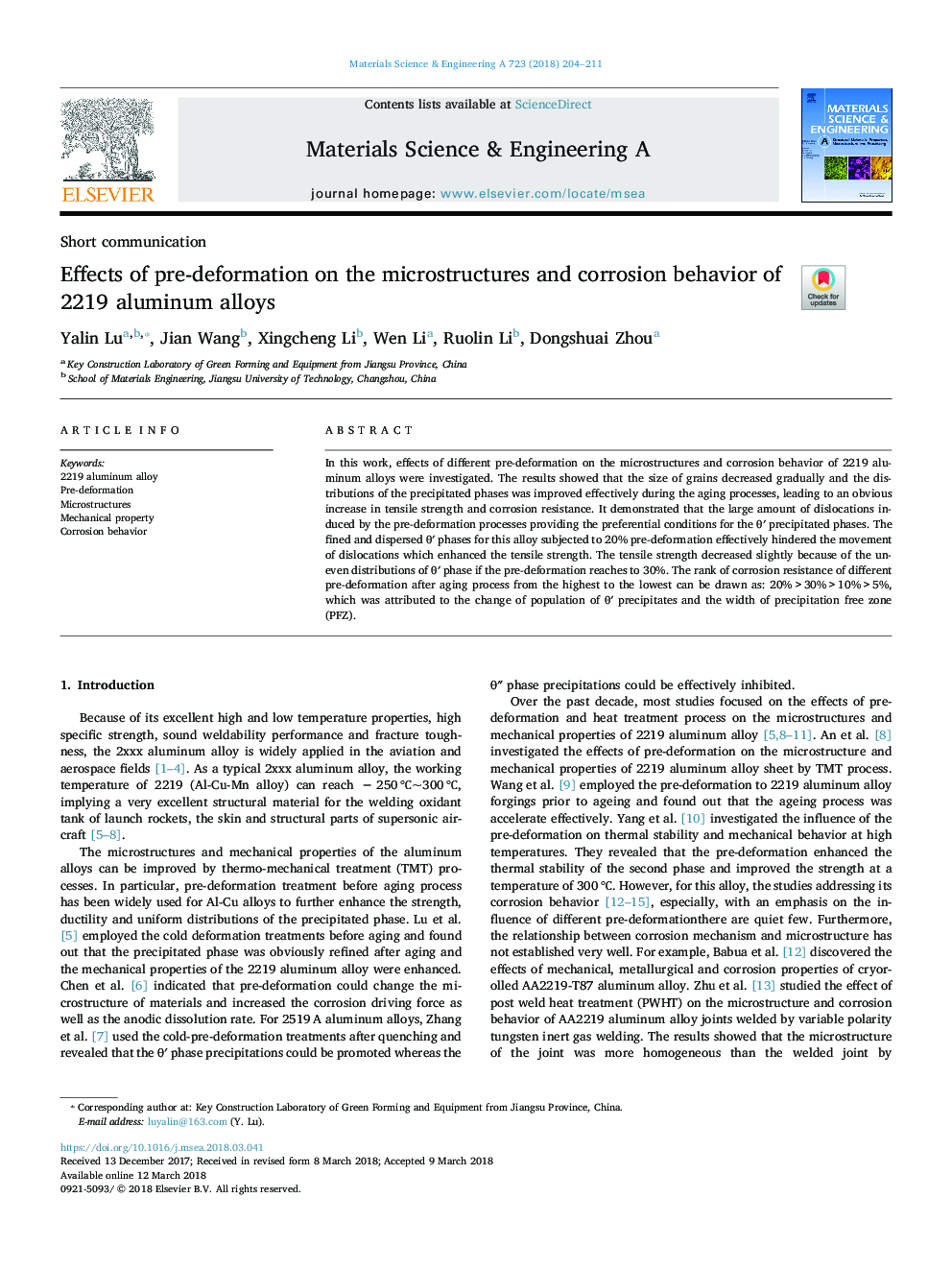| Article ID | Journal | Published Year | Pages | File Type |
|---|---|---|---|---|
| 7972716 | Materials Science and Engineering: A | 2018 | 8 Pages |
Abstract
In this work, effects of different pre-deformation on the microstructures and corrosion behavior of 2219 aluminum alloys were investigated. The results showed that the size of grains decreased gradually and the distributions of the precipitated phases was improved effectively during the aging processes, leading to an obvious increase in tensile strength and corrosion resistance. It demonstrated that the large amount of dislocations induced by the pre-deformation processes providing the preferential conditions for the θⲠprecipitated phases. The fined and dispersed θⲠphases for this alloy subjected to 20% pre-deformation effectively hindered the movement of dislocations which enhanced the tensile strength. The tensile strength decreased slightly because of the uneven distributions of θⲠphase if the pre-deformation reaches to 30%. The rank of corrosion resistance of different pre-deformation after aging process from the highest to the lowest can be drawn as: 20%ï¼30%ï¼10%ï¼5%, which was attributed to the change of population of θⲠprecipitates and the width of precipitation free zone (PFZ).
Related Topics
Physical Sciences and Engineering
Materials Science
Materials Science (General)
Authors
Yalin Lu, Jian Wang, Xingcheng Li, Wen Li, Ruolin Li, Dongshuai Zhou,
